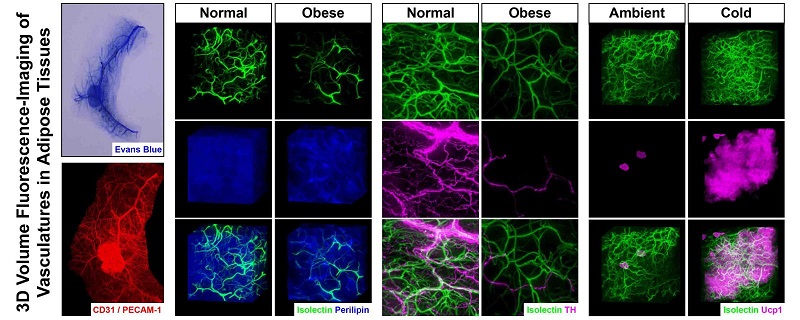Adipose tissues are the key energy-storage depots and are also an important hormone-producing organ; they exert indispensable metabolic roles in energy homeostasis. It has been broadly recognized that dysregulation of adipose metabolism leads to obesity, type 2 diabetes and other profound metabolic diseases. The vascular system sustains tissue survival, metabolism and homeostasis. Both white adipose tissues (WAT) and brown adipose tissues (BAT) are densely vascularized. Moreover, adipose tissues, particularly BAT, are among the most highly vascularized organs of the body, with each adipocyte appearing in direct contact with capillaries. Extensive studies have demonstrated that the local vascular remodeling has critical roles in regulating the physiological and pathological changes of adipose tissues. These functional changes of the vasculatures, i.e., vascular plasticity, directly affect the local flux of oxygen, nutrients, hormones, immune cells, and other regulatory components in adipose tissues.
In this study, Zeng's group reported their establishment of a volume fluorescence-imaging procedure, readily applicable to a variety of vascular research endeavors. They further show the entirety of the vascular network in intact mouse WAT and BAT at a single-capillary resolution, for the first time in the field. In addition, accurate quantification of vasculatures in adipose tissues is made, with close to 1 meter of vasculatures per mm3 inguinal adipose tissue on average. The pathological remodeling of vasculatures in adipose tissues under obese conditions, and the physiological changes of vasculatures in WAT in response to a cold challenge, were also demonstrated. Moreover, they show that the cold-induced vascular plasticity depends on the sympathetic-derived catecholamine signal and is involved in the beiging process. The newly established procedure, together with the important findings in vascular structures in adipose tissues, will serve the field in future investigations of the vascular system in adipose tissues or other research scenarios.

